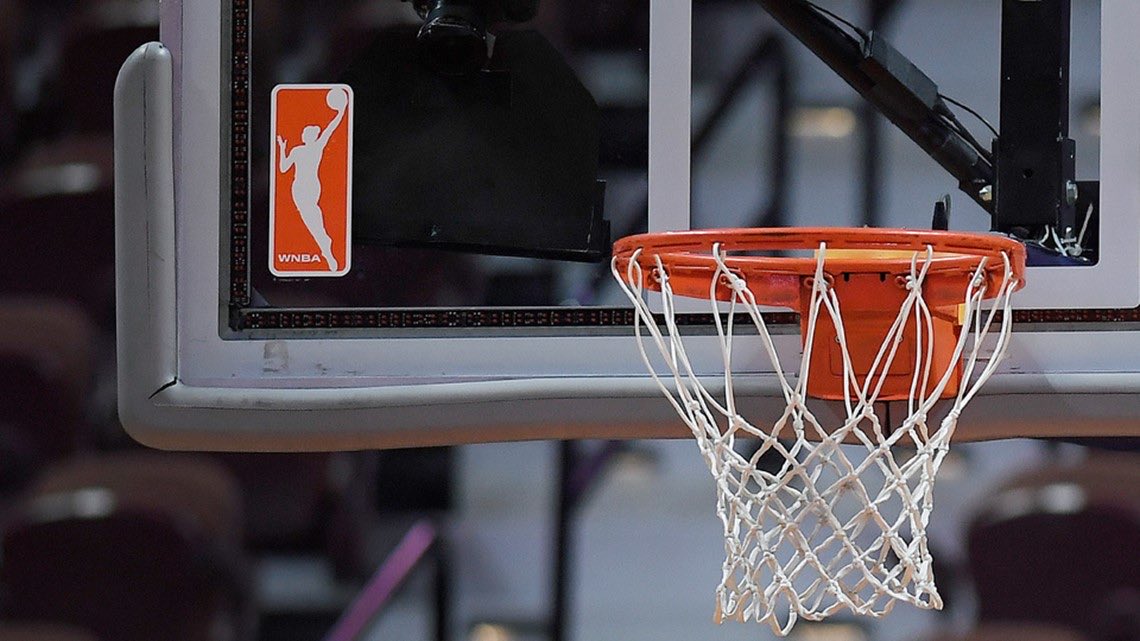
The WNBA is reportedly evaluating the possibility of adjusting rim height and related game parameters as conversations grow around enhancing the excitement and visibility of the league. Central to this discussion is the idea of enabling more dunking opportunities, a move that could help shift public perception, attract a broader audience, and showcase the evolving athleticism of WNBA players.
While dunking has long been a staple in the men’s game, it remains a rare spectacle in women’s professional basketball. Only a handful of WNBA players have dunked in regular season games, with Brittney Griner, Lisa Leslie, Sylvia Fowles, and Candace Parker among the few who have achieved the feat. However, as athletic training improves and younger generations of women players demonstrate more vertical explosiveness, the question arises: should the game evolve structurally to better highlight these emerging capabilities?
Sources familiar with the league’s internal discussions say that executives are not rushing to make changes, but they are “actively exploring” the idea of lowering the rim from the standard 10 feet to around 9 feet or 9 feet 6 inches. This adjustment could potentially open the door for more players to finish above the rim and execute dynamic plays that traditionally dominate highlight reels in the NBA.
The idea of a lowered rim is not new. Over the years, it has resurfaced in media debates, player interviews, and coaching clinics. Proponents argue that such a change would reflect the physiological differences between male and female athletes and tailor the game to accentuate the strengths of its stars rather than mirror a model developed for a different demographic.
Opponents, however, raise valid concerns about the implications of making structural changes to the court. Some players and fans argue that lowering the rim could be perceived as patronizing or as diminishing the legitimacy of women’s basketball. They worry that the move might undermine the skill and strategy already on display, aspects that have defined the league for over two decades. Additionally, some former and current players have pushed back against the narrative that dunking is essential to fan engagement, noting that the women’s game emphasizes team play, fundamentals, and tactical nuance in ways that set it apart and deserve recognition on their own merits.
“It’s a nuanced issue,” one WNBA team executive said. “On the one hand, we want to continue evolving and pushing the envelope in terms of athleticism and entertainment. On the other, we have to be mindful of the integrity of the game and the pride our players have in competing under the same standards as men.”
Interestingly, several college and high school coaches have already experimented with alternative rim heights during practices to build confidence and technique among their players. Some report that allowing younger athletes to practice dunking on a 9-foot rim encourages better use of verticality in rebounding and shot-blocking, even if those same athletes can’t yet dunk on a regulation 10-foot goal. This suggests a developmental benefit, beyond just showmanship, that could eventually feed into the pro ranks.
Another layer to the conversation involves marketing and media exposure. The WNBA has gained momentum in recent years through increased media coverage, social media engagement, and broader cultural conversations about gender equity in sports. A noticeable rise in ratings, jersey sales, and star power—thanks to players like A’ja Wilson, Caitlin Clark, Sabrina Ionescu, and others—has put the league in a growth phase. League officials are now considering whether physical changes to the game could align with its strategic goals of expanding its fan base and appealing to younger, more casual viewers.
Former WNBA coach and player Becky Hammon weighed in on the issue during a recent podcast appearance, noting, “The women in this league are getting stronger, faster, and more explosive. If a slight change helps the audience see that athleticism more clearly without compromising the game’s integrity, then it’s worth at least having the conversation.”
The league reportedly plans to commission a study on the biomechanical implications of rim height and its potential influence on injuries, shot trajectories, and player performance. Any formal proposal to alter the rim would also require extensive consultation with players, coaches, and ownership groups, many of whom hold divergent views on how best to evolve the sport.
For now, the WNBA remains in an exploratory phase. No decision is imminent, and the league’s commissioner has emphasized that the process will be deliberate, data-driven, and inclusive. But the fact that the conversation is even on the table signals a broader shift in how the women’s game is viewed—less as a counterpart to the NBA and more as a unique and evolving sport that can define its own future.




